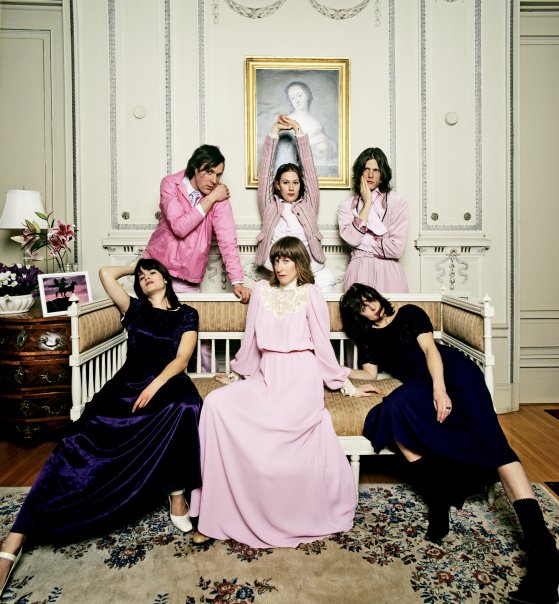Dance that Doesn’t Run on Pretty: Chris Schlichting
Dance critic Lightsey Darst gives a close reading of Chris Schlichting's singular body of work. You can see Schlichting's "love things" on stage as part of this year's SCUBA at the Southern May 15-16.


LAST SUMMER, CHRIS SCHLICHTING’S LOVE THINGS premiered in the Southern Theater and Walker Art Center’s 2008 Momentum, a showcase for emerging choreographers. love things was subsequently chosen for this year’s SCUBA, a dance exchange program in which audiences see works from other cities. This means Schlichting’s work will appear in Seattle in late May and in San Francisco in June; but our chance is May 15 and 16, when love things will appear at the Southern Theater, along with works from San Francisco and Seattle.
Here’s my trouble: I like Chris Schlichting’s work, and I think you should go to see it (even if you’ve seen it before), but I’m having trouble explaining why. I don’t have recourse to the dance writer’s usual bag of tricks here. I can’t, for example, bust into some pretty dance language — you know, “sweeping,” “visceral,” “shaken silk” — because love things doesn’t run on pretty. The movement is variable, sometimes jittery, sometimes driven; sometimes it’s vernacular and sometimes it’s presentational. The presentational often comes with a rock-star glamour, a moodily sexy chic to the hard-edged, propulsive, space-grabbing moves — lots of flashing, whipping hair, explosions of movement that suddenly smooth, planetary gravity set against a soundtrack of disembodied fanfares; and there’s a Fosse-esque jazz section, slick hip pops and cheeky seduction… Still, you can’t rely on the occasional beauty of this dance. The set and costumes — a pink-purple nightmare of bruising hothouse roses, mad bunting, and thrift store overkill — suggest that beauty’s less a goal than a trope to play with, critique, invert.
I also can’t promise that Schlichting is going to explore some issue — tell you more about war, for example. There are no issues here. Men? Women? Middle-East peace process? Science? God? All absent (except perhaps for god, but then he turns up everywhere). Schlichting’s own explanations for love things and for what he’s currently working on have to do with dance only. Here he is talking about his work in progress:
I don’t know if this is making any sense at all… but having conversations about this movement and then what’s happening when this movement is expanding, how is it shaped by environments and what is it looking like on a larger scale or when other people are involved…
Sure, Chris, it makes sense, but… To some extent all artworks comment on their media, but I usually avoid writing about that meta-layer, that art commentary, because it tends to turn people off. If you’re not a dancer, do you want to see dance about dance? With Schlichting, though, we’re going to have to head right into the meta-talk to get through to something else which, I am convinced, lurks on the other side. Bear with me.
LOVE THINGS BEGAN LIFE AS FANTASY. For Momentum, Schlichting proposed to stage dance fantasies — dances he’d loved, dances he’d been fascinated by, dance experiences he wanted to have or see. On its surface, this proposal has the charming but tedious naivety of a kid showing you his Pokemon cards. Why should Schlichting’s fantasies interest anyone else? Also, how can this proposal result in anything but a formless pastiche?
For an answer, perhaps we should consider Schlichting’s relationship to dance. From one angle, Schlichting has a limited dance background. He didn’t become interested in dance until the end of his college years, which means that his body isn’t steeped in ballet or traditional modern technique. Outside of his own work, he doesn’t have a tremendous amount of performance experience.
________________________________________________________
Schlichting’s been like a shy boy circling a crush. Or like a shark homing in on prey. Or like a mystic looking for god.
________________________________________________________
But look from a different angle. Schlichting was into breakdance as a kid, then skateboarding, then the highly physical punk scene, and then, while he was in college to study theater, swing dance. Think about it: Schlichting’s been like a shy boy circling a crush. Or like a shark homing in on prey. Or like a mystic looking for god (there he is again).
Schlichting, then, has a relationship with dance. Of course, all dancers and choreographers do, but often it’s more a part-to-the-whole or fellow-embryo relation–close, at times instinctual, taken for granted. Schlichting doesn’t forget. Dance is an other he needs to court, attack, please, confront. In this context, his dance fantasies, enacted through dance itself, become more interesting: they are not simple self-gratification, not easy. They are a risk. And to a viewer, the referential meta-dance strain submerges in the immediate thrill and heartbreak of relation.
SITTING IN ON A REHEARSAL FOR LOVE THINGS, I realize I don’t usually watch Schlichting himself. Partly, this is because he often puts himself in the center back, where he’s least visible, and partly it’s because I tend to follow women in dance. But I think I’ve also been instinctively avoiding him. He lacks the finely honed thousand-yard stare, the crowd-wooing smile. He looks — a little personal, maybe. Exposed.
For example, take dancer Jessica Cressey’s jazz break-out scene. Hung up on her fireworks, you wouldn’t normally look at Schlichting, but he’s there, in the background. What’s he doing? He’s watching her constantly, responding to her with his own considerably less sleek moves. He has his own watcher (Justin Jones), who never looks at Cressey, but copies Schlichting’s moves with showier finesse and no emotion.
This is quiet but deliberate self-exposure: Schlichting has made himself a hidden focal point. He is not a cipher for the audience, not a blank we step into; he is, himself, the true audience. He’s outside the dance for long sections — in fact, it ends without him — but once I’ve begun to pay attention to him, I feel his watching presence through the entire dance. Schlichting might be saying, along with Emily Dickinson,
This is my letter to the World
That never wrote to Me–
except that he’s not talking to us. love things is not about his letter to Dance/the World/the Other; it is the letter itself.
This sense of conversation, and of the care with which Schlichting courts his crush or tracks his prey or prays to his god — this sets his work apart. “Experimental” would be a tempting label for this non-narrative, abstract, complex work; but it would be fundamentally wrong, because to experiment you have to hold back options, to isolate and control. Schlichting’s not holding back. He is rigorous, but not removed.
Paradoxically, the personal nature of this work lets me further in than if the work were merely presented to me. “You hope it resonates in some way,” Schlichting says, talking about the relation between his work, which he makes for his own reasons, and the audience.
Each time I watch, I want to see more of it; I find myself moving my head around to see more angles in, the way you shift to catch the symmetry of a pine plantation. I want, I realize, to be inside.
Related performance details:
You can see Chris Schlichting’s love things on stage at the Southern Theater as part of this year’s SCUBA Touring Network, May 15-16; both performances begin at 8 pm (tickets are $20).
About the writer: Lightsey Darst writes on dance for Mpls/St Paul magazine and is also a poet who served as the founding coordinator of mnartists.org’s What Light: This Week’s Poem publication project.